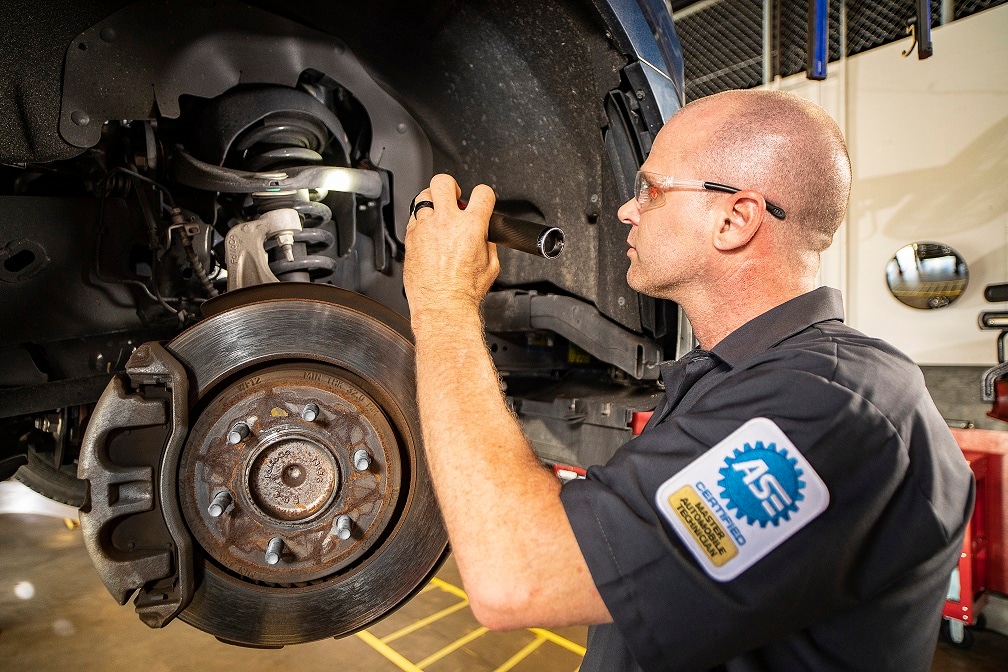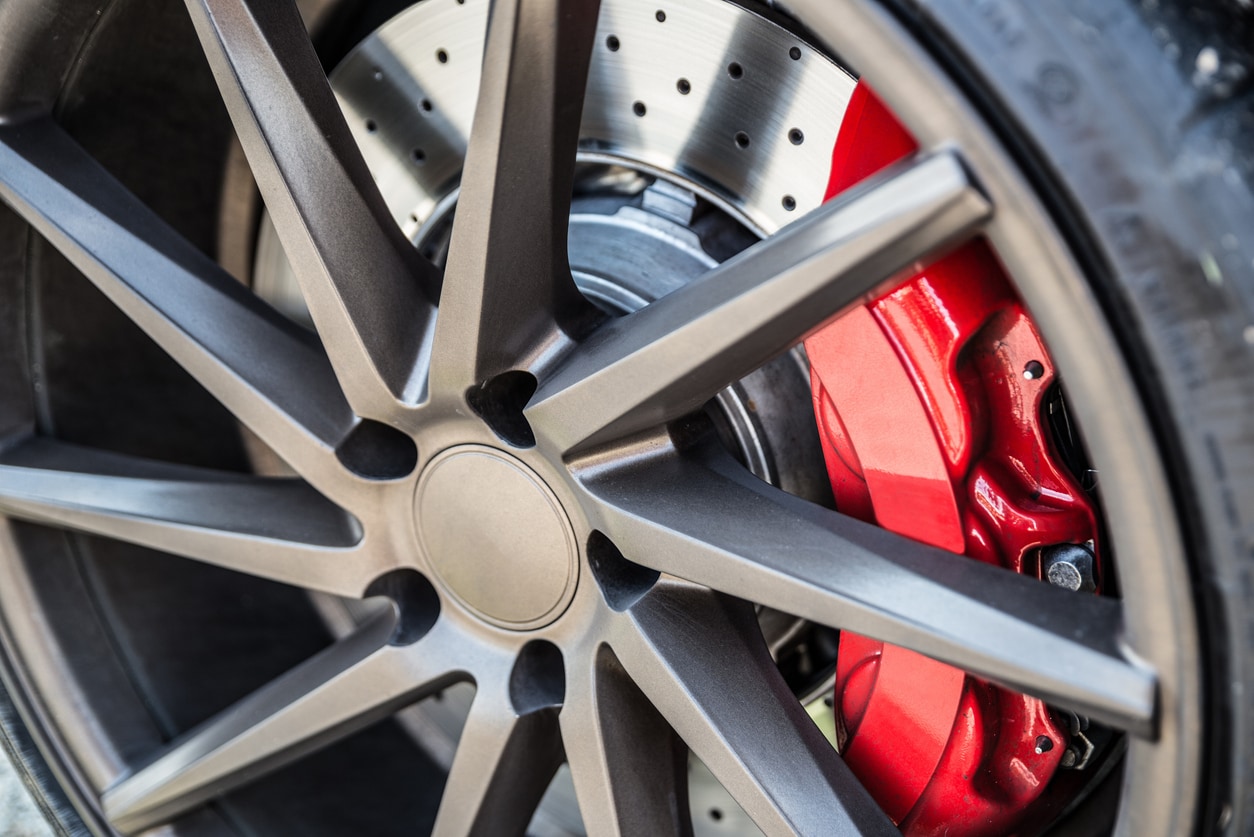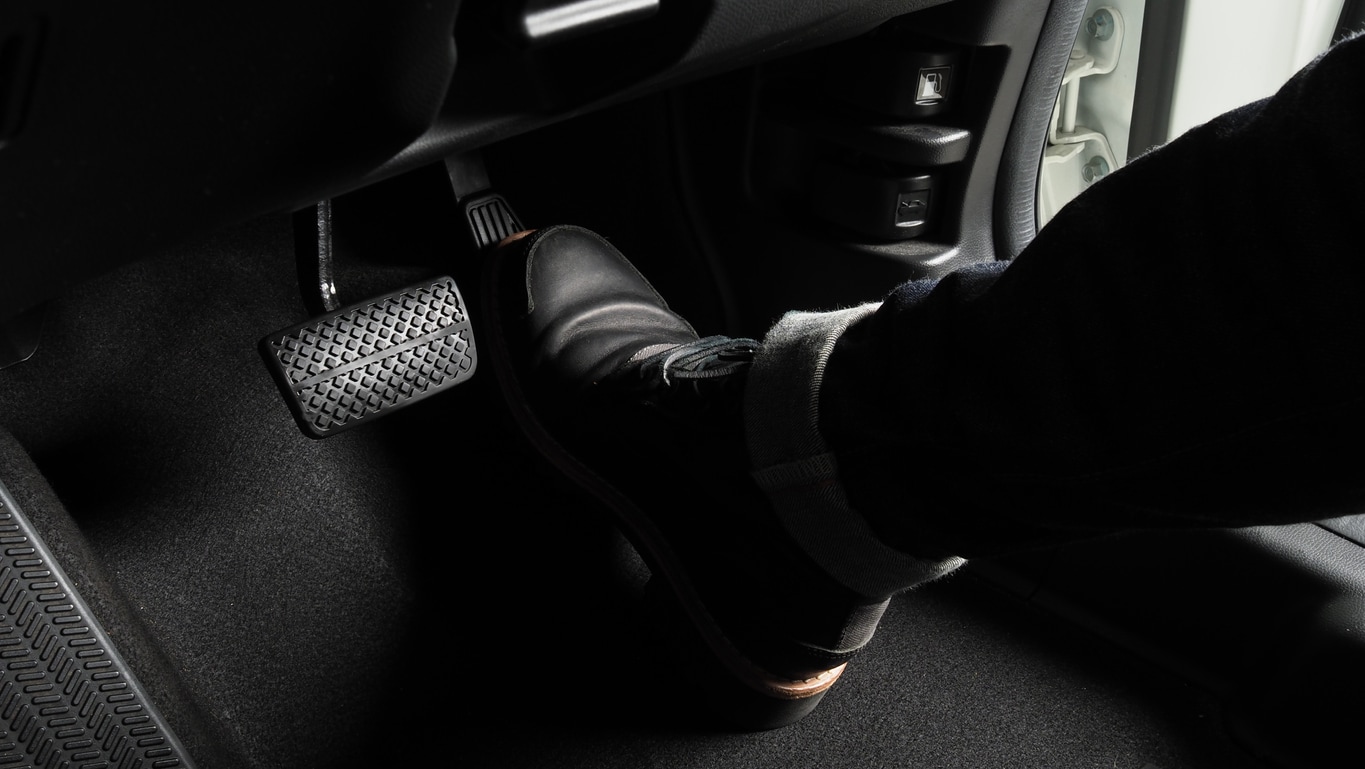Whether you’re on a road trip or your daily commute, car brakes play a vital role in safe driving. So naturally, you’d want to keep your brakes in great shape for as long as possible, right? Knowing how to brake properly goes a long way towards keeping them in good condition. And when you know how to maintain your car brakes, you could save a lot of money on repairs.
Think you know everything there is to know about how to brake when driving? Put yourself to the test with the five techniques below.
5 Techniques to (Potentially) Extend the Life of Your Brakes.
Whether you’ve got old-fashioned drum brakes or more modern disc brakes, the basics of your braking system are the same. Brakes turn the kinetic energy of your moving car into heat energy through friction, which slows down your vehicle. That means anytime you press the brake pedal, there's naturally some degree of brake wear.
By following regular brake maintenance and practicing good driving habits, your brake pads and rotors could last a lot longer than you might think! Here are five techniques you can start using today to help extend the life of your brakes by hundreds — or even thousands — of miles.
Brake Conservatively
The best way to extend the life of your brakes is to brake conservatively. But what exactly does it mean to “brake conservatively”? This technique doesn't involve using your brakes less, but rather using them less intensely.
Give yourself enough time and space on the road to slow down gradually. And avoid slamming on the brakes or repeatedly pressing on and off the brake pedal. Put conservative braking into practice using these three safe driving habits:
- Scan the road ahead. Don’t just keep your eye on the car in front of you. Keep your eyes up and scan the road for any hazards or potential slowdowns before reaching them.
- Anticipate other drivers’ actions. Pay attention to what other drivers are doing so you can react quickly and appropriately. Look out for any sudden lane changes, slowdowns, or accidents.
- Use the pivot method for proper braking position. The pivot method is a way to position your foot for optimal pedal use. The way it works is simple: place the heel of your right foot between the accelerator and brake pedals. The ball of your foot should comfortably reach the center of the brake pedal (if not, you may need to adjust your seat position). From there, simply keep your heel planted and pivot your right foot forward to apply pressure to either pedal.
Use Progressive Braking to Make Smooth Stops
Along with the pivot method, drivers should use progressive braking for smooth, gradual stops. This technique may help reduce brake wear.
Here’s how to make a smooth stop when driving using progressive braking:
- Plant the heel of your right foot on the floor so that the ball of your foot can reach the center of the brake pedal (like in the pivot method above).
- With most of your foot’s weight resting on the floor, pivot your foot forward to apply light pressure to the brake pedal.
- Gradually apply more pressure until you feel resistance from the brakes engaging and your car begins to slow.
- Continue applying gentle pressure to slow or stop the car as needed.
- Just before completing a stop, ease off the brake pedal slightly to prevent your car from bouncing back too hard.
Remember to give yourself plenty of time and space to make smooth, progressive braking possible. The slower and smoother you brake, the less wear your brake system is likely to experience.
Practice Coasting & Brake Hovering
Another technique to preserve your brakes is coasting. Coasting involves slowing your car down by taking your foot off the gas pedal without touching the brakes. This way, friction from the road naturally slows your car down without your brakes having to engage.
If you see brake lights ahead, coasting is an efficient way to reduce speed before coming to a complete stop. While coasting, it’s a good idea to hover your foot over the brake pedal so you can react immediately if you need to slow down suddenly.
Travel Light
It’s simple physics: the less weight your car carries, the less effort your brakes require to stop your car’s momentum. Next time you drive, assess how much extra weight you’re carrying and consider reducing the load. If you’ve just returned from a road trip, for example, don’t wait to remove coolers, camping gear, or any other heavy items. Your brakes will thank you.
Use the Parking Brake Every Time You Park
Your car’s parking brake, also known as the hand brake or emergency brake, is a mechanical or electronic braking system separate from your hydraulic brakes — and for good reason. The parking brake ensures your vehicle doesn’t go anywhere when parked.
What’s more, using the hand brake when you park helps reduce wear on your normal brakes and transmission, especially when parking on an incline. This is because when you park without the parking brake, the only thing keeping your car from rolling away is the parking pawl—a tiny hammer-shaped pin that locks into your transmission gears.
Using the hand brake every time you park takes this unnecessary strain off your transmission.
5 Driving Habits That Hurt Your Brakes
Just like there are ways to protect your brakes, there are plenty of driving habits that can damage them. Drive like this, and you could soon be experiencing one of the many warning signs that your brakes need servicing.
Here are five driving habits to avoid if you want to keep your brakes working longer:
Slamming on the Brakes
Hitting the brakes hard isn’t safe for you, nor is it safe for other drives on the road. So while it’s true that using your brakes less will help them last longer, that doesn't mean waiting until the last second to use them! In fact, hard braking generates more rapid heat from friction, potentially causing greater brake wear.
What’s more, suddenly slamming on the brakes may cause your wheels to lock up, resulting in loss of vehicle control. Most cars come equipped with an anti-lock braking system (ABS) to help keep you in control when emergency braking so your wheels won't lock up. But it’s best to avoid slamming on the brakes outside of emergencies.
Frequent Braking
In some instances, such as stop-and-go traffic, frequent braking is unavoidable. However, if you constantly have to tap the brakes because you’re following too closely behind the car in front of you — also known as tailgating — then it’s best to give your brakes a break by giving the other driver some space.
Hard Cornering
Hard cornering, or making rapid turns, can quickly become dangerous. Just like slamming on the brakes, braking hard while cornering may increase the chance of a skid and loss of vehicle control.
If you’re driving safely, you shouldn’t have to brake while turning at all—or only slightly. When turning, it’s best to do all your braking in a straight line before reaching the turn, then coast around the corner at that reduced speed before accelerating out of the turn.
Using Both Feet to Drive
Unless you drive a manual and therefore need your left foot to press the clutch, you should only ever drive with your right foot. When people learn to drive with both feet, they often ride the brake with their left foot. In other words, the weight of their left foot constantly applies a small braking force even while the right foot is busy accelerating.
Fighting your car’s acceleration like this is the surest way to grind your brake pads to dust long before they should be due for replacement.
Not Checking Your Brake Fluid
Brake fluid is incredibly important to both braking performance and safety. Letting brake fluid get low or dirty is a surefire way to damage crucial components like your master cylinder and brake lines. Additionally, low fluid may indicate it's time for brake pad/shoe replacement, or there may be a leak.
Additionally, old brake fluid can stop protecting your brake system over time, potentially leading to corrosion. Generally, corrosion levels can be determined by how much copper is in the brake fluid through testing. If copper content is too high, this could pose a bigger issue for your brakes.
Though the exact replacement recommendation varies by vehicle make and model, you want to exchange your brake fluid if the copper content is over 200 PPM or approximately every two years or 30,000 miles. Be sure to follow your manufacturer-suggested maintenance schedule, and check your brake fluid level at every oil change.
Give Your Brakes a Break
While better driving habits may help to extend the life of your car brakes, it's also important to have them serviced or inspected regularly. From brake repair and brake pad replacement to a simple inspection, you can trust the Tires Plus technicians for all your brake repair and inspection needs. Schedule an appointment at your nearest service center today!


